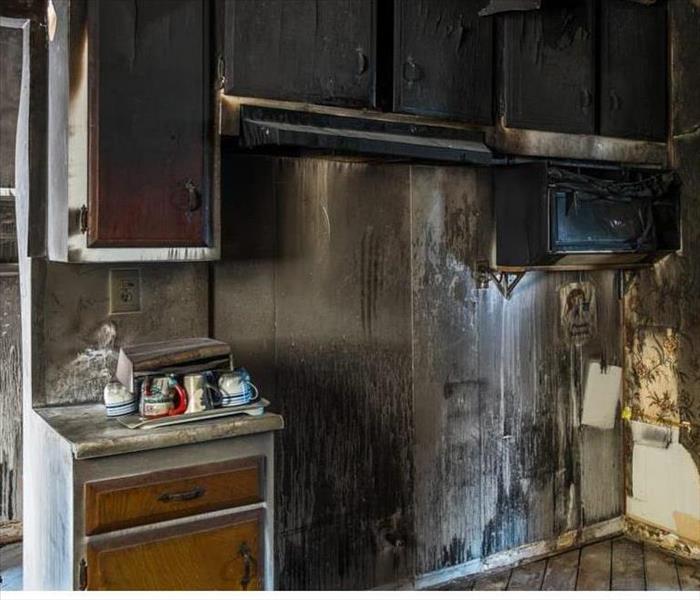Fire, Smoke and Carbon Monoxide Dangers
3/1/2022 (Permalink)
Fire is dangerous. We all know that. But, did you know that the flames themselves might not be the greatest risk as far as health dangers and property damage? Fire smoke is the leading cause of fire deaths, exceeding burns by a three-to-one ratio. And while direct exposure to smoke is harmful to your respiratory system, it can also negatively affect your property’s structure, sometimes in unexpected ways.
Smoke from any type of fire is comprised of carbon monoxide, carbon dioxide and soot. Depending on what’s burning, many other harmful chemicals also enter the air, and are inhaled into your lungs or latch onto walls, furniture, clothing, ductwork, and other areas.
When it comes to your property, knowing how temperature, the surrounding environment, particle ionization, and airflow patterns affect smoke distribution can help you better restore your property to normal.
Heat pushes the soot, the by-product of incomplete combustion, and can cover everything in its path. Smoke seeks a sort of equilibrium; it travels until its energy has been used up and travels to cooler temperatures. Soot, when tested, is always found to be on the acidic side of the pH scale. Acidic materials are destructive to most elements in nature. Acidity over time continues to degrade most metals by etching and oxidizing leading to discoloration, pitting or corrosion of the substrate. Finish coatings (paint) over metals are often yellowed and softened and will fail over time because they cannot stand the harsh acidic environment. These acid soot residues have ongoing reactions until removed. Smoke is magnetically charged and contains metals which act as path to short circuits and as an insulators causing overheating of components.
Contact us at 530-241-2424






 24/7 Emergency Service
24/7 Emergency Service
